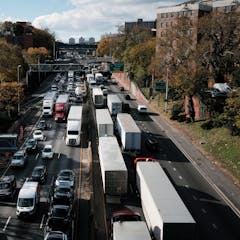
Articles sur Cities
Affichage de 81 à 100 de 1511 articles

Mike Davis’s radical urban history of LA was a trailblazing book that remains startlingly relevant to those of us who live in other supersizing cities in the early 21st century.

People may think that green spaces often hide criminals. On the contrary, there is evidence they contribute to reducing crime.

Community wealth building is a direct response to extractive policies and aims to build an economy on the principles of local ownership and control of assets.

Nigerians’ capacity to prevent, cope with and reduce flood risks is determined by access to housing, transport, drainage, income and education.

Well-designed residential developments with abundant tree cover can help protect cities against urban heat and flooding.

Young queer people growing up in rural areas don’t necessarily need to flee their communities to find safety and acceptance.

Longtime street performers in Old Montréal, a popular site for busking, feel as though the city is getting rid of them.

New towns have had a better track record in places of rapid economic and population growth, such as east Asian countries.

Noise pollution is a serious problem, and cars make a lot of it. But roads are also a factor.

The sustainable and inclusive development of the St. Lawrence River is essential. A prolonged laissez-faire attitude will have harmful consequences on people and the environment.

Cities are crucial to addressing climate change. To meet emission reduction targets, cities need to involve their residents in environmental action at the local level.

Examining how COVID-19 lockdowns and stay-at-home orders were implemented in Toronto, Johannesburg and Chicago reveals the impact they had on vulnerable communities.

Harnessing the combined effect of trade and urbanisation could significantly boost the economies of African countries.

Attracting more diverse municipal candidates who represent Canada’s population requires better pay. Right now, city council jobs favour aging white men who are retired or independently wealthy.

Community members want their schools to address issues beyond academics, new research suggests.

Artificial light is upending trees’ ability to use the natural day-night cycle as a signal of seasonal change.

Publicly accessible gardens are an essential part of our food system. It’s important for policymakers to understand that growing food in city gardens is central to health, food security and culture.

North America’s 2021 extreme heat event should compel governments to scale innovations from leading cities and countries to advance resilient, restorative and renewable cities.

Moving around cities will change in the future as new technologies like self-driving cars gain wider adoption. Science fiction can give us a glimpse into these futures.

Stemming the water crisis in the western US will require cities and rural areas to work together to make water use on farms – the largest source of demand – more efficient.
